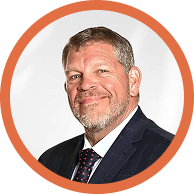The initial motivation for accumulating assets was to provide future opportunities during an elusive and vague future known as retirement. Creating future choices was the name of the game. Everyone loves options, but few love making decisions.
When saving for retirement, you make current sacrifices, passing on things you could have purchased or experienced along the way. You do the “heavy lifting.” The discipline and commitment to saving are your responsibility. The luxury of the pensions our grandparents had is a thing of the past for most Americans. Your financial journey requires dedication and focus on an arbitrary future and date. The vagueness makes saving for some emotionally problematic and for others a zealous quest for more options in the future.
Your defined contribution plan or tax-deferred savings plan will likely be your largest asset upon separating from the workforce. Contributing the appropriate amount of your income is the first important step. Create a savings strategy and stick to the plan. Recognize that you will adjust over time as your life changes, as will the tax code. Begin by considering three specific planning techniques you will use when it is time to access your resources.
The first technique enables you to use your retirement money with confidence to enjoy your life after work. You have invested for many years, nurturing your investments and adding more regularly. You have conditioned yourself to accumulate money and grow it. Distribution, however, is inevitable. Your retirement dollars will exit based on your intentional decision or by the hand of the IRS in the form of required distributions.
The second technique avoids getting trapped by the 70/70/70 rule. This rule postulates 70% of individuals take social security at age 62; 70% of tax-deferred accounts are untouched until people are required to make distributions, and 70% of lifetime savings remain in the account when one spouse passes away, increasing the tax rate by default. The observation may not be empirical data, but it does match what I have seen over the thirty-three years of my financial career.
The third technique helps answer the age-old question, “How will I know I am going to run out of money?) A few strategies to reduce fear and anxiety are understanding your standard of living versus income replacement, having a retirement “Practice Year,” and developing a retirement budget. “The techniques required to minimize risk and enhance retirement require thought-out strategies that are well developed, properly deployed, and continuously monitored,” says Grant Soliven, senior advisor at the Financial Enhancement Group.
Soliven adds: “The truth is simple: what goes in must come out. We will all exit this planet, and we will all have to withdraw our retirement savings, or your heirs will. While retirement is, indeed, an optional event, distributing your money is not.”
Most of you reading this article started with retirement dreams and are now facing or getting ready to face retirement realities. Will you wait for the IRS to make the distribution decisions for you, or will you take charge?
Joseph A. Clark is a Certified Financial Planner and Managing Partner of The Financial Enhancement Group, and an SEC Registered Investment Advisor. This article was co-authored with Grant Soliven. Contact Joe or Grant at yourlifeafterwork.com or 800-928-4001. Securities offered through World Equity Group, Inc. Member FINRA/SIPC. Advisory services can be provided by the Financial Enhancement Group (FEG) or World Equity Group. FEG and World Equity Group are separately owned and operated.

 Grant Soliven, AIF®
Grant Soliven, AIF®




